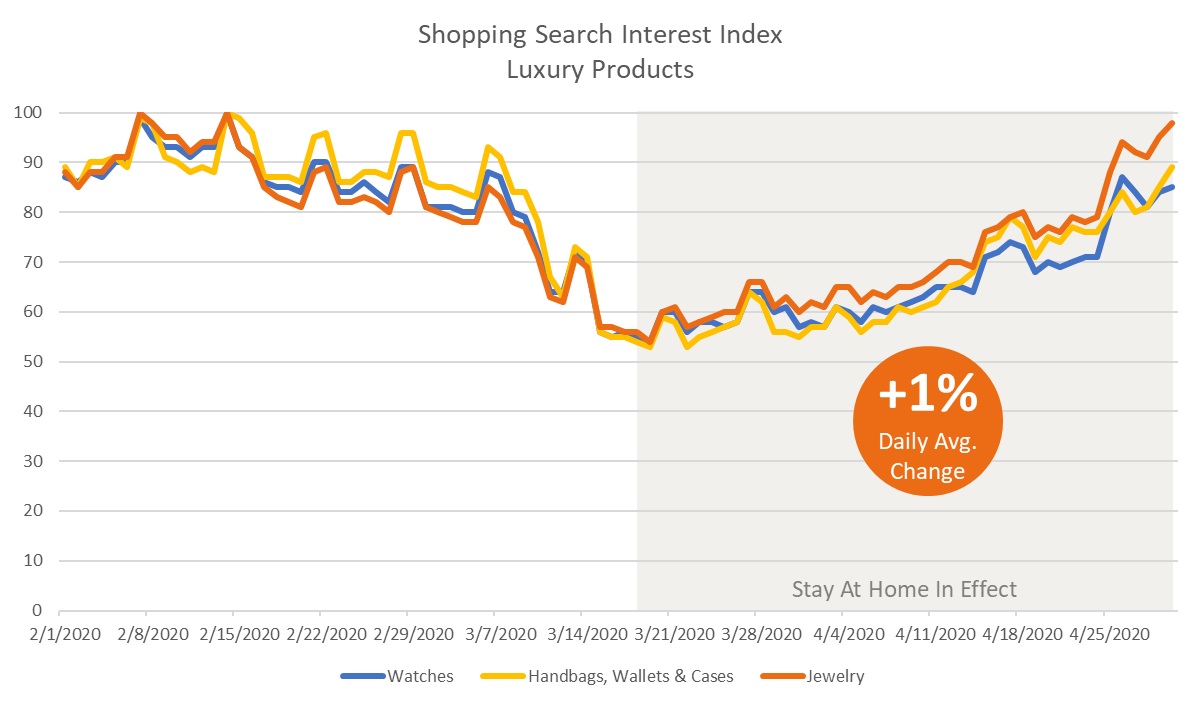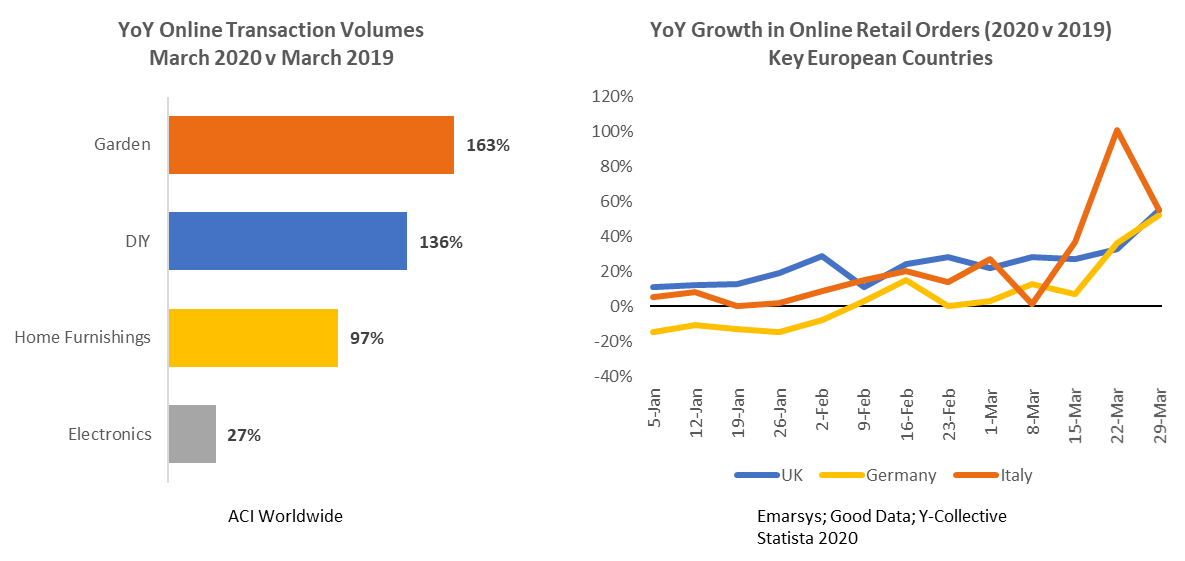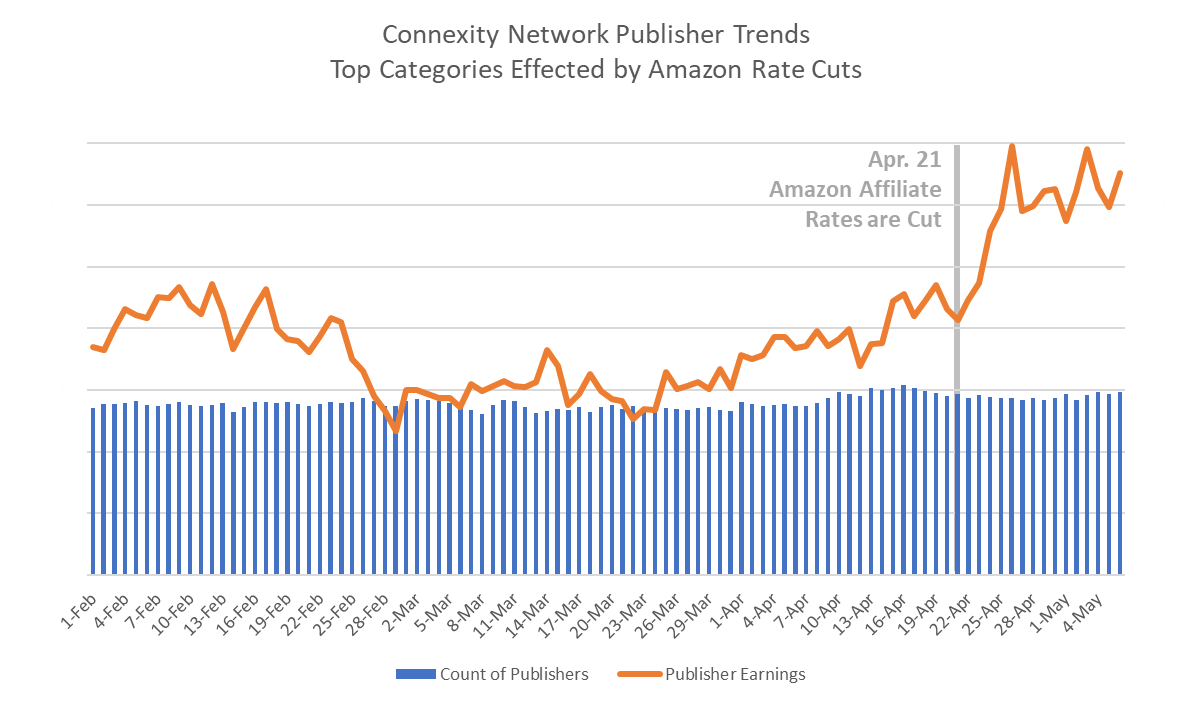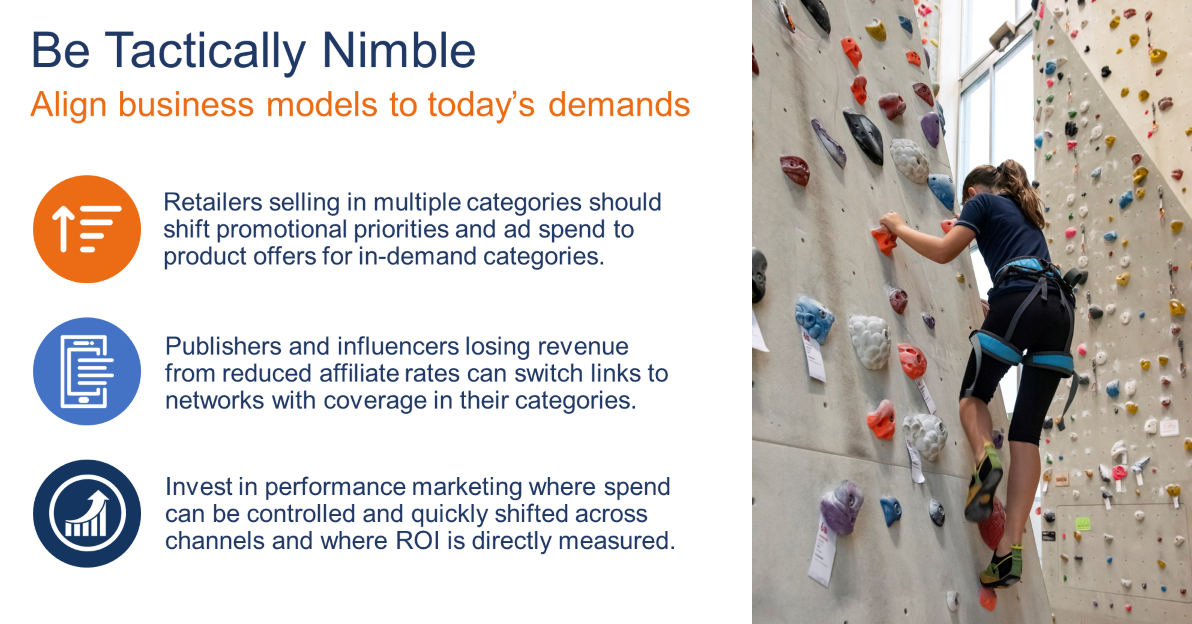Ecommerce Impact from Coronavirus: May Update
The impact of Coronavirus on ecommerce and solutions for marketers
At the end of March, 2020 Connexity published a report about the impact of COVID-19 on consumer shopping behavior and on the e-commerce market. This second installment updates our findings with the latest available data points and offers new insights to help merchants and publishers navigate on-going challenges. Data in this report is compiled using metrics from the Connexity performance marketing network as well as third-party sources.
As this article includes a number of important findings from the report, we have provided quick links to key sections for easier navigation. Key sections of the article include:
Consumer Impact: Shifts in Shopping Behavior
Market Impact: Challenges & Opportunities
Performance Marketing: Solutions for Retailers
Summary: Recommendations for Advertisers
Consumer Impact: Shifts in Shopping Behavior
This first section observes impacts to consumers in terms of important shifts in their shopping behavior as a result of the COVID-19 pandemic. We examine trends in online searches for products to understand how reaction changes to the availability of essential products, personal care services and non-essential aspirational products.
A number of trusted sources are utilized to gather these insights. We look at:
Search trend data – Google search trends were analyzed from February 1 forward to the most recently available date of data as of the writing of this report.
Sentiment data and news – Consumer Sentiment survey results and market data is cited from multiple research and news sources including GfK, Earnst & Young, Accenture, Boston Consulting Group and more.

1. A New Baseline is Reached for Essentials
Early talk of quarantines drove a surge in shopping for essential cleaning supplies and home paper products. With supplies running low, searches for availability of these items spiked. As supply began to meet demand and as consumer anxiety over essential items declined, searches moderated revealing a new higher average baseline of activity.

2. Home Offices are The New Essentials
With the inability to visit the office and with the prospect of working from home for an extended period, many sought to create home offices or bolster their work-from-home setups. Desks, peripherals and office equipment became essential purchases.

3. Personal Care is Peaking
Weeks of quarantining with the inability to visit beauty parlors, barber shops and nail salons is driving strong interest in personal care products for at home use. Interest in personal care products is reaching an all-time high.

4. Interest in Luxury Goods is Returning
While economic uncertainty drove a significant dip in luxury product searches, there are signs consumer interest in luxury goods is returning. Despite financial uncertainty, consumer interest in luxury goods is returning. The question here is whether consumers can translate interest into spend.

5. Consumer Sentiment & Behavior
Consumers Expect Brands to be Leaders in Bad Times
83% Say the way companies conduct themselves during the crisis will impact whether they do business with them in the future – (GfK)
78% Agree that companies have been a “force for good” as the country copes with COVID-19 – (GfK)
Financial Conditions Drive Switches in Products and Brands
36% Due to the financial effects of COVID-19, about 36% of consumers are trading up, down or trading off on products and brands – (BCG)
33% Of consumers who are making deep cuts in their consumer behavior, 33% say brand is now far less important to them – (EY)
Coronavirus Will Have Lasting Changes on Shopping
42% Report having purchased groceries online for the first time ever because of the pandemic – (Business Insider)
52% Say they won’t go back to old ways of shopping now that online delivery & curbside pickup have gained ground – (PYMNTS.com)
Market Impact: Challenges & Opportunities
While impacts were observed to consumer search, shopping and sentiment, shifts in market conditions have also occurred. Some key changes in the market pose particular challenges to retail marketers while others open up new opportunities. This section outlines some of the key changes for context.
1. Ecommerce Accelerates
In-person shopping continues to be curtailed in many sectors and will likely face months of additional challenges. As such, consumers are increasingly buying online.

As consumer shopping moves online, retailers shift their selling model. Retailers are following the opportunity and shifting focus to e-commerce. Evidence of this can be found in an increase of 62% in online ecommerce storefronts being created on the Shopify platform, according to PYMNTS.com.
2. New Opportunities in PLAs
Recent changes by some of the biggest ecommerce players have created opportunities for retailers in the area of Product Listing Ads (PLAs).
Amazon Cuts PLA Spend
Prioritization of its essential items supply chain meant Amazon cut back on Google and Bing PLAs to control traffic. This change provides advertisers opportunities in the form of increased PLA inventory and decreased competition for traffic. (Bloomberg News)
Google Offers Free Product Listings
Google announced the launch of free product listings on Google Shopping to help merchants gain exposure as COVID-19 puts greater pressure on the retail sector. Introducing the benefits of search listings to retailers who haven’t yet used these services will likely drive further adoption of paid-listing-ads. (The Keyword)
3. Affiliate Publishers are Challenged
In April affiliate referral rates were reduced for Amazon Associates, the world’s largest retail affiliate advertising program. These changes lowering affiliate commissions impacted publisher revenue streams. Publishers and influencers in categories with the largest cuts are looking for solutions with other affiliates or performance marketing networks to supplement losses in retail ad revenue.
The categories with the biggest impacts include:
-63% in Furniture, Home, Garden & Pets
-50% in Beauty, Business Equipment & Music Instruments
-45% in Tools and Outdoor
-33% in Sports & Baby Products
Performance Marketing: Solutions for Retailers
Connexity manages online product advertising campaigns on behalf of merchants in every product category, finding hard-to-reach consumers on unique traffic channels. With thousands of retail-oriented consumer traffic sources, our Performance Marketing Network provides unique benefits to retail marketers over affiliate or other network opportunities.
For this report, we analyzed performance metrics across numerous campaigns in the Connexity network from February 1 through April. Metrics were examined within product offer categories across all retailers operating in those categories.
What Our Data Reveals
1. Significant new customer growth
2. Leaning in continues to pay off
3. Performance margins tick up
4. Publishers find replacement revenue

1. New Shoppers Can Be Found
Connexity sees growth in new customers shopping at merchants in top categories. While the rate of daily active merchants in top retail categories remains relatively steady, we see significant growth in new customers purchasing from these merchants. From February through early May, we saw:
+120% in growth since February 1
+3% daily average growth

Example new customer growth success story: Wine Merchant
Increasing and optimizing ad spend drives new customer growth. New customer acquisition is an important KPI for any merchant. Quickly scaling traffic at the right time (while consumers were entering quarantine) enabled Connexity to help wine merchants seize the opportunity. The result is a significant increase in sales but also new customers, and at a lower cost of acquisition.
$37 = Avg. cost of acquisition (COA) before traffic scaling
$24 = Avg. cost of acquisition (COA) after traffic scaling

2. Leaning in Continues to Pay Off
Where merchants are increasing spend, conversions & sales volume is increasing. Connexity is finding merchants opportunities to lean in and to optimize spend in order to drive sales and improve conversions.

3. Performance Margins are Ticking Up
Purchase intent is up among those who continue to shop. Even where shopping activity is down due to financial uncertainty, such as in luxury goods, performance margins are ticking up.

4. Publishers Find Alternatives
Affiliate publishers switch to performance marketing networks as Amazon cuts rates. Cuts in Amazon affiliate rates challenge ad revenue for publishers in key categories. Performance marketing networks, like Connexity, are attractive alternatives with important benefits for key challenges publishers now face include:
Monetization – Cost-Per-Click monetization with competitive rates for many offers
Coverage – Thousands of merchants in hundreds of categories that fit existing content themes
Support – Tools for implementing ad links and support to optimize performance opportunities


2. Be Tactically Nimble

3. Prepare for Recovery

